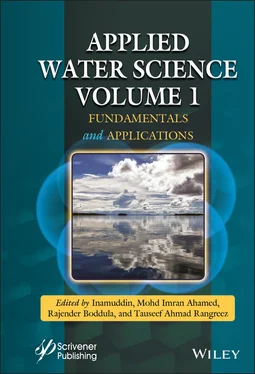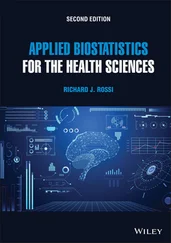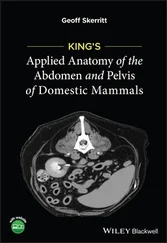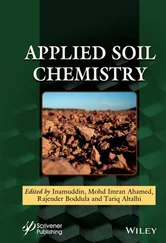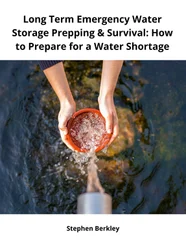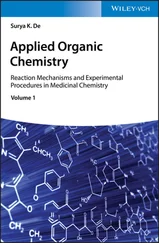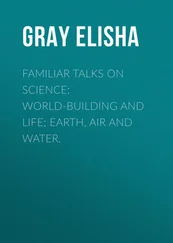2.2 Occurrence and Behaviour of Pharmaceutics in Aquatic Systems
2.2.1 Nature and Sources
In the current chapter, the term “pharmaceuticals” is broadly used to refer to “pharmaceuticals” used to treat human and animal infections sensu stricto and their precursors and metabolites. Figure 2.1 summarizes the main classes of pharmaceuticals used for the treatment of human infections. The main classes include antibiotics, diuretics, contraceptives, cancer therapeutics, beta-blocker, anti-inflammatory analgesics, neuroactives, steroids and related hormones, and lipid regulators (Boxall, 2004; Aus der Beek et al., 2016; Szymonik et al., 2017). Pharmaceuticals commonly used in veterinary applications include ionophore antibiotics, growth promoters, and nutritional supplements (Bottoni et al., 2010; Bartros and Peneulas, 2017). Other pharmaceuticals such as Diclofenac are widely used analgesic and anti-inflammatory drugs in both human and veterinary applications (Aus der Beek et al., 2016). Thus, globally, diclofenac is one of the most frequently detected pharmaceutical in environmental samples (Aus der Beek et al., 2016). Common examples of specific pharmaceuticals include carbamazepine (antiepileptic), sulfamethoxazole (antibiotic), and ibuprofen and naproxen, which are both analgesics (Aus der Beek et al., 2016). The various classes tend to have contrasting physico-chemical properties. For example, beta-blockers have variable hydrophobicity, while lipid regulators and antibiotics are hydrophobic compounds (Monteiro and Boxall, 2010). Hormones and steroids also tend to be hydrophobic (Monteiro and Boxall, 2010, 2016).
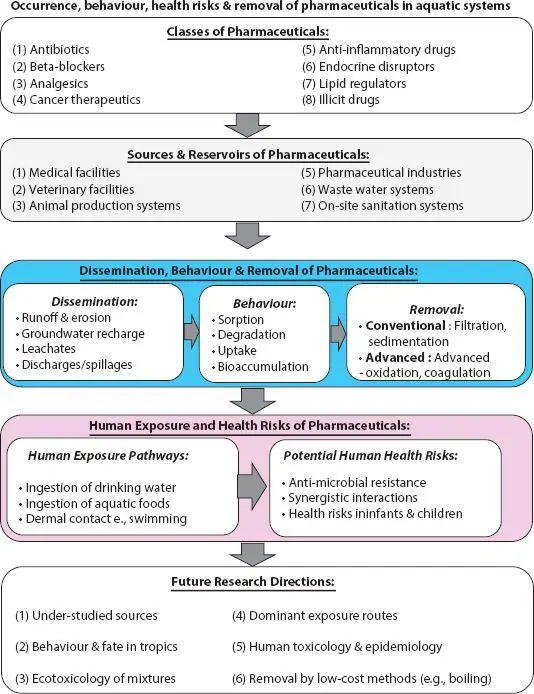
Figure 2.1Summary depiction of the nature, sources, behaviour, human exposure and health risks, and removal of pharmaceuticals in aquatic systems.
Figure 2.1 summarizes the hotspot sources and reservoirs of pharmaceuticals in aquatic systems. Major sources include solid wastes and wastewaters from (1) medical facilities such as hospitals, (2) veterinary facilities, (3) livestock husbandry and abattoirs, and (4) pharmaceutical industries (Bound and Voulvoulis, 2005; Paiga et al., 2016; Gwenzi and Chaukura, 2018; Ragowska et al., 2019). Municipal wastewater treatment systems, which receive wastewater and effluent streams from various sources, act as reservoirs of pharmaceuticals and their metabolites (Nikolaou et al., 2017). This is because wastewater treatment plants based on conventional treatment processes only achieve limited or partial removal of pharmaceuticals (Nikolaou et al., 2007). For example, Kay et al. (2017) observed that raw sewage from sewer overflow is a significant source of pharmaceuticals in surface aquatic systems. Other potential hotspot sources which are currently under-studied include waste/wastewaters from (1) solid waste repositories such as non-sanitary landfills or waste dumps, (2) on-site sanitation systems such as septic tanks and pit latrines, (3) mortuaries and funeral parlors, and (4) gravesites and cemeteries (Gwenzi and Chaukura, 2018). Due to poor solid waste and wastewater management practices in developing countries, these under-studied sources could be significant sources of pharmaceuticals released into aquatic systems.
2.2.2 Dissemination and Occurrence in Aquatic Systems
Pharmaceuticals are widely disseminated from their sources and reservoirs via hydrological processes (Figure 2.1). These hydrological processes include erosion, runoff, leaching, groundwater recharge, and direct discharge and spillages of wastewaters and effluent (Gwenzi and Chaukura, 2018). These processes account for the wide spared occurrence in various environmental compartments including surface aquatic systems, groundwater, soils, crops, aquatic biota, sediments, and water and drinking water systems (Houtman, 2010; Paltiel et al., 2016; Fabbri et al., 2016). The occurrence of pharmaceuticals in the environment including aquatic systems has received great research attention (Verlicchi et al., 2012; Gaw et al., 2014; Carter et al., 2019). However, only a small proportion of those commercially available, commonly dispensed and used have been monitored in the aquatic environment. Pharmaceuticals are considered as emerging contaminants because (1) they are not included among parameters monitored in conventional monitoring programmes such as drinking water quality (Gwenzi and Chaukura, 2018) and (2) less is known about their effects on organisms (Kaczala and Blum, 2016; Letsinger and Kay, 2019). Interest in pharmaceuticals in the environment is largely driven by increasing evidence of their health risks, and recent advances in analytical equipment (Gwenzi and Chaukura, 2018).
Research on pharmaceuticals as environmental contaminants dates back to about 1976 to 1985 (Daughton, 2016). Today, the field has developed into a multidisciplinary area attracting a lot of research interest. To date, several pharmaceuticals have been detected in the environment, including estrogens such as estrone and ethinylestradiol, as well as the metabolites of the lipid-lowering drug clofibric acid (Aus der Beek et al., 2016). Most of the pharmaceuticals are found as unchanged form in wastewater as well as in rivers (Kay et al., 2017). However, there are drugs such as aspirin which have been found in the metabolite form of salicylic acid (Murdoch, 2015). Fluoxetine and propranolol were also observed to occur both in their original and metabolite forms (Lόpez-Serna et al., 2013). Fluoxetine metabolite is nor-fluoxetine while propranolol one is 4OHpropranolol. Carbamazepine also has Carbamazepine-glucuronide as one of its metabolite (Zhou et al., 2011).
The pharmaceuticals detected in aquatic systems tend to vary considerably among countries. The most common ones detected in parts of Australia and Europe are nonsteroidal anti-inflammatory drugs, analgesics, psychiatric drugs, and antibiotics (Paiga et al., 2016 and Murdoch, 2015). Ibuprofen and diclofenac are the most common nonsteroidal antiinflammatory drug, paracetamol and aspirin for the analgesic, carbamazepine, and fluoxetine for psychiatric and for antibiotic a variety is detected in surface aquatic systems (Paiga et al., 2016; Murdoch, 2015; Lόpez-Serna et al., 2013; Vazquez-Roig et al., 2011). Lipid regulator and diuretic have also been reported in Australia and in Spain waste water and river water (Osorio et al., 2016; Murdoch, 2015). In the USA, a total of about 93 pharmaceuticals have been reported to occur in aquatic systems, and the most common ones are antibiotics (27) and antidepressants (15) (Deo, 2014). Pharmaceuticals have been observed in lakes showing they are able to travel long distances in rivers without being modified (Daneshvar et al., 2010).
Pharmaceuticals have also been detected in groundwater but in relatively lower concentrations than in surface aquatic systems (Maskaoni and Zhou, 2010). The low concentration has been assumed to be due to transport and transformation processes which cause major modification and removal of pharmaceuticals. Pharmaceuticals have also been detected in marine systems. For example, 36 pharmaceuticals were detected in the Mediterranean Sea in concentrations quite similar to those found in the Ter River (Spain) which flows into the Mediterranean with maximum concentrations of 29 ng/L (Gros et al., 2012). The same authors also detected 15 pharmaceuticals in tap water, but concentrations were relatively low, with highest concentration being 13 ng/L. Illicit or recreational drugs including amphetamines and other psychostimulant drugs have also been detected in aquatic systems in several countries (Apul et al ., 2020; Wang et al ., 2020).
Читать дальше
